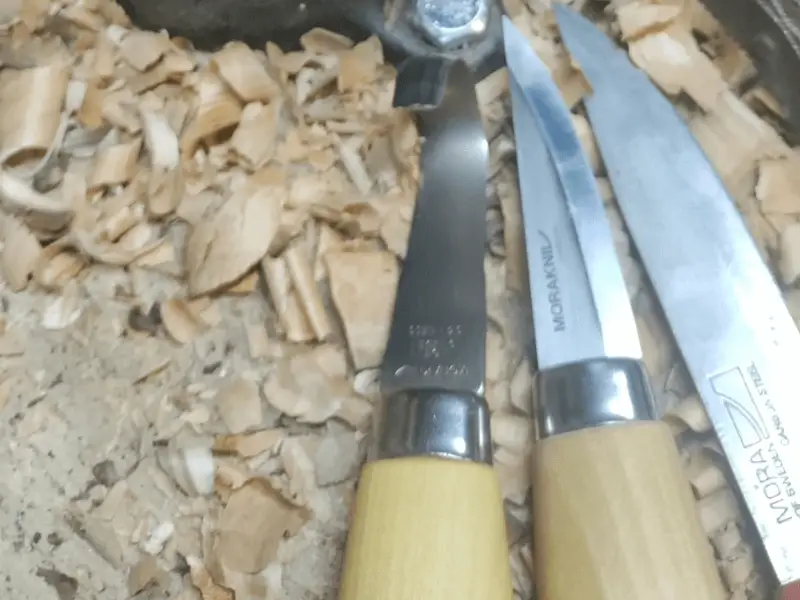Spoon carving is one of the oldest forms of woodworking, and it’s still trendy today due to its simple and timeless designs. If you’re interested in learning this classic craft, start with the right tools to make your spoon-carving experience as successful as possible. You can start with a kit, where you buy a spoon carving kit with all the necessary tools or carve with the tools you already have in your store.
You’ll need three essential tools to get started with spoon carving: an axe, a hook knife or a spoon carving knife, a straight knife, and some form of rasp to smooth the piece after it’s cut free from the block of wood.
In this article, we’ll look at the best starter tool kits available and how to use them to make your first spoon-carving experience as easy as possible.
Best Starter Tools for Spoon Carving
Essential Tools used in spoon carving;
Carving Axe
For anyone who carves spoons, a carving axe is a necessity. It can be used for shaving, chopping, and cutting wood. A spoon is most often shaped from a wood block using this tool.
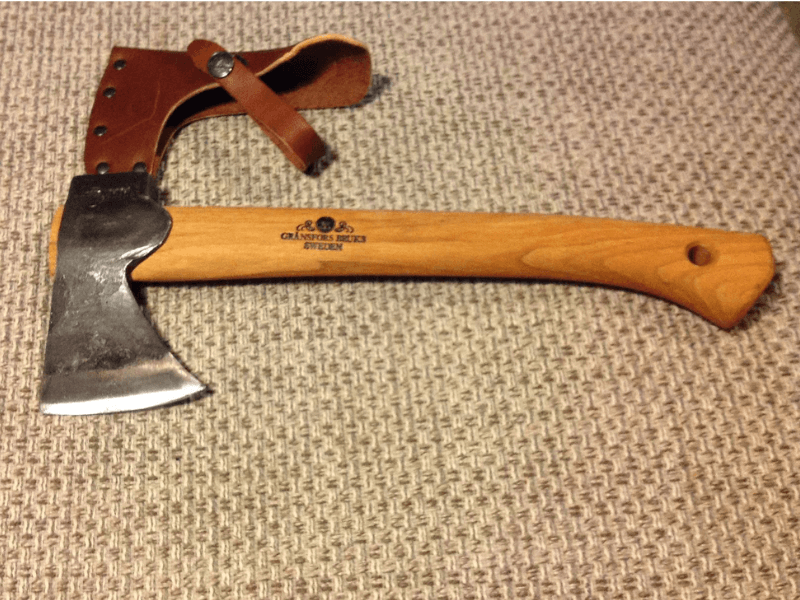
However, you must consider the wood you will work with when choosing a carving axe. A larger, heavier axe works best in tougher woods, but a lighter one is preferable in softer woods. The Gransfors Bruks Wildlife Hatchet is likely the best axe for beginners when carving spoons. Anyone can use it without becoming overly exhausted because it is lightweight. Also, the axehead’s edge shape is ideal for carving, and Gransfors’ tools are of the highest caliber. There are also other Best Axes for Spoon Carving you can check if Gransfors Bulk is unavailable.
Another important consideration when using the axe is using long, even strokes that span the entire handle length. Make sure to keep your strokes straight and steady. You may need to sharpen the blade regularly to keep it sharp and effective.
Safety should also be a priority when using a carving axe. Always wear protective gear, such as safety glasses, gloves, and ear protection, to reduce the risk of injury.
A straight knife
When it comes to spooning carving, a straight knife is an essential tool. This type of knife shapes, details, and refines your work. We use a straight knife for carving because it has a wide, slicing bevel, which most refers to as a Scandinavian grind lacking in other knives, such as a pocket knife. A straight knife’s slicing bevel makes the knife durable, sharp, and precise.
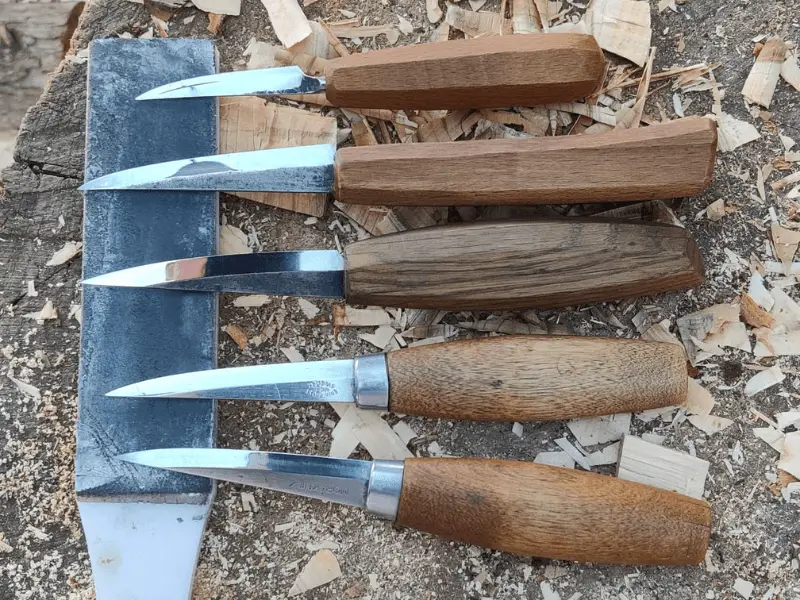
Mora 106
Straight knives come in various shapes and sizes, so it’s essential to find the right one for your project. When purchasing a straight knife, look for a long, thin blade with a sharp point. This will allow you to create complex curves and shapes as you carve. The Mora 106 is the best spoon carving knife available right now. The handle is comfortable and ergonomic, and the blade is made of carbon Steel that stays sharper and won’t bend or break during carving.
You don’t need an additional, more expensive knife. Of course, there are other spoon-carving knives that you might look at, but in our case, we use the Mora 106.
Hook knife
A hook knife is one of the most important tools for spoon carving. This knife is specifically designed for carving hollows and curves in wooden spoons. It can carve out a spoon bowl and add decorative details.
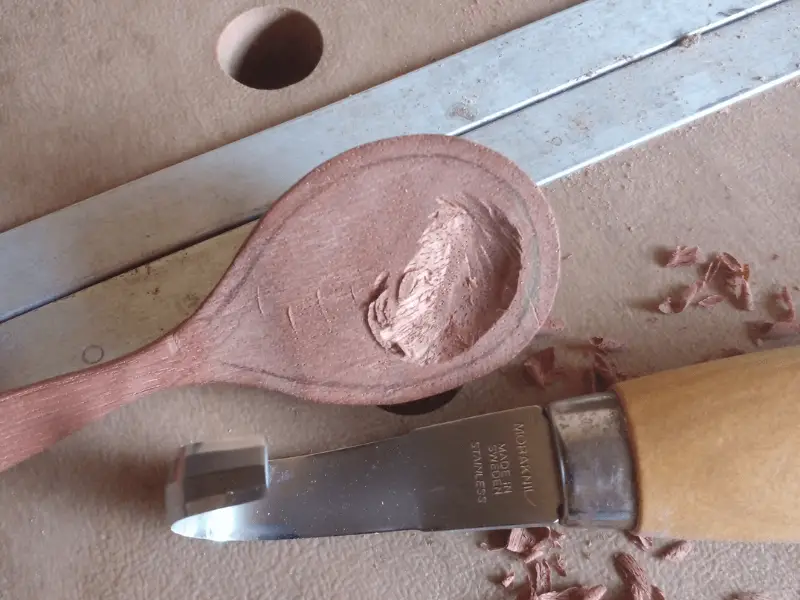
A practical hook knife should have a compound curved blade that cannot flex and vibrate in the cut while cutting through the wood and is thick enough not to chatter. The curved shape of the blade allows you to make long curves easily.
The best hook knives that I consider effective are the Morakniv 164 and Morakniv 162 because they have ergonomic handles that are comfortable to hold and carefully balanced, making them ideal for you to carve for a long without getting tired.
When using a hook knife, hold it firmly in your hand, as the curved shape of the blade can make it easier to slip out of your grip. It’s essential to keep the blade in contact with the wood at all times, as this will prevent you from cutting yourself. Keep your fingers away from the sharp edge of the blade.
A rasp
A rasp is a great tool to use for spoon carving. It is used for making cuts and removing wood in the final stages of carving. When using a rasp, it is essential to keep the blade sharp. A dull knife can be dangerous and cause the splitting or even breaking of your spoon. The key is taking time and ensuring you get the job done correctly.
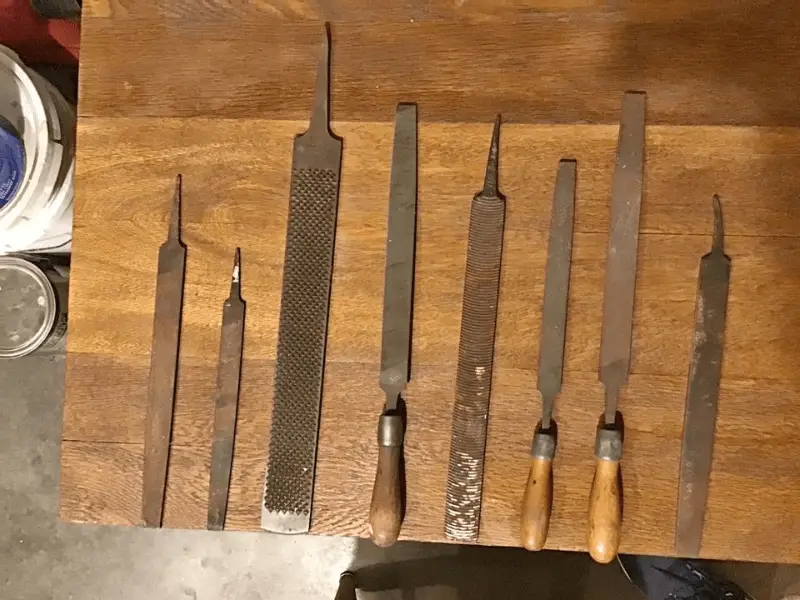
Rasps come in a variety of sizes, shapes, and materials. A smaller, round, or half-round rasp is ideal for smaller, more detailed areas. These are excellent for shaping the handle, spoon bowl, and other details. For larger sizes, choose a flat or bastard rasp that covers more surface area and can work faster. Make sure to select one with a finer cut for more complex projects.
Finally, when using a rasp, it is essential to keep the grain of the wood in mind. The grain will determine how easily the rasp works and how smooth the finish is when you’re done. If you’re working against the grain, the rasp will cause more damage than necessary and won’t leave a smooth finish.
It’s also important to use caution when using a rasp. Always wear protective eyewear, and ensure your hands are well protected. Additionally, you should ensure that the rasp does not slip from your hands when working on delicate details. With these tips, you can make sure that you get the best results possible from your rasp when spoon carving.
Factors when buying spoon-carving tools
Quality and Durability:
Investing in high-quality tools ensures that they will withstand the demands of spoon carving and provide long-lasting performance. Look for reputable brands known for their craftsmanship and durable materials. Quality tools not only make carving more enjoyable but also contribute to the overall quality and longevity of your finished spoons.
Ergonomics and Comfort:
Carving can be physically demanding, requiring extended periods of time and repetitive movements. Consider tools with ergonomic handles designed to reduce strain and fatigue. Comfortable handles allow for better control and precision, enabling you to carve with ease and accuracy.
Tool Versatility:
While the essential tools mentioned earlier are crucial, you may also want to explore additional tools that offer versatility in your spoon-carving journey. Chisels, gouges, and specialized carving knives can expand your creative possibilities and help you achieve intricate designs or unique spoon shapes. Consider your specific carving preferences and goals when selecting additional tools.
Budget:
Consider your budget when purchasing spoon-carving tools. While it’s important to invest in quality tools, there are options available at various price points. Research and compare prices, read reviews, and weigh the cost against the value and durability of the tools. Remember, high-quality tools are a long-term investment that can enhance your carving experience and produce superior results.
Availability and Accessibility:
Ensure that the tools you choose are readily available and accessible to you. Check local woodworking stores, online marketplaces, and specialized carving tool retailers. Consider factors such as shipping costs, delivery times, and customer service when making your purchasing decisions.
Personal Preference and Learning Style: Lastly, consider your personal preferences and learning style. Some carvers may find certain tools more intuitive or comfortable to use based on their hand size, grip style, or carving technique. It’s helpful to handle different tools if possible, or read reviews and seek recommendations from experienced carvers to gain insights into which tools may align best with your individual needs and preferences.
Conclusions
Spoon carving is a rewarding and enjoyable activity you can do at home with the right tools. The best starter tools for spoon carving include a carving axe, a straight knife, a hook knife, a rasp, and chisels.
When choosing wood for your project, make sure to pick something hard enough to withstand the pressure of the knives. Before you begin carving, it is essential to practice your techniques on a piece of scrap wood first.
Proper safety precautions, such as wearing protective eyewear and gloves, are also essential for successful spoon carving. With the right tools and techniques, anyone can create beautiful spoons, perfect for use in the kitchen or as decorations around the home.

